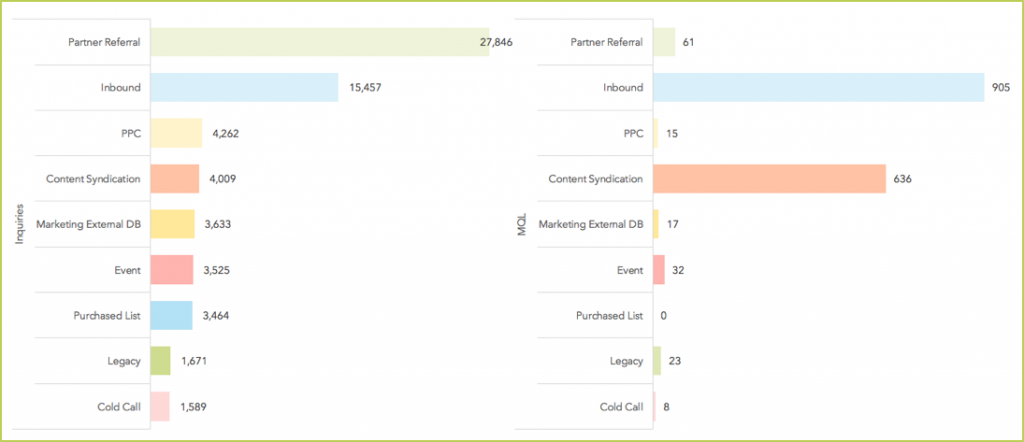It’s a scenario that I’ve seen countless times. A well thought out campaign has just been started or has run its course, and it comes time to look at the results — but something is missing! It’s not just the clicks and opens that the client wants to know about; it’s how many MQLs and opportunities, not to mention lead source, job role, channel, asset. . .
All these questions are for good reason too, because the tactical decisions on where to focus limited resources depend on having a high-level view of results as well as the nitty-gritty details.
When a client comes to me and asks for this information after a campaign has been running, it usually takes a lot of digging into the standard details being captured by the marketing automation platform (MAP) and CRM systems to even begin to answer the questions.
But when a little bit of work is put in beforehand to design the campaign for reporting, answering these questions becomes much easier, and even routine.
Marketing Strategy and Campaign Design for Reporting
In my former life as a mechanical engineer, we had a concept called design for manufacturing. It simply meant that rather than designing a product to solve just the problems being faced, we would also design it to be manufactured as easily as possible. This concept has been expanded to a whole range of other factors: design for maintenance, design for assembly, design for sustainability, and the list goes on and on.
For example, if we were designing a car radiator, we would design it not just to remove heat from the engine effectively, but also to be as easy as possible to build, assemble, maintain, replace, recycle. . . Since each of these factors has its own unique set of needs and integrations with other factors, it is no small task balancing it all!
Marketing strategies, campaigns, channels, technologies, and platforms all have different goals, requirements, and factors in a similar manner. An email designed for easy set-up and sending might not lend itself as easily to tracking that activity or aggregating reporting.
Effective reporting comes from building your campaigns, forms, data capture points, response capture, data fields, and integrations to enable a comprehensive reporting framework – in other words, “design for reporting.” Of course, you also have to balance that with designing for maintenance, ease of use, segmentation, scoring and other key factors!
That is why, in order to repeatedly and routinely get the answers you need, you will need to design and implement a reporting framework.
A reporting framework is more than just the out-of-the-box campaign, email, lead, and opportunity reports in your MAP or CRM; a full reporting framework details what data needs to be captured when and where to answer your business questions. Having a complete framework gives you the right information at the right time to make tactical course corrections and overall strategic decisions.
Part of that reporting framework can include getting reporting such as the Demand Funnel Record and Campaign Attribution Analyzers or full blown marketing dashboards.
So how do you answer important questions when your full reporting framework is not yet complete?
Although building a reporting framework and the necessary processes does not have to take a long time, how do you answer your questions about campaign influence if you don’t have one in place?
Well, it can be done through customized data pulls and one-time analysis. The results are often limited in scope. For example, some types of trending data, such as timestamps when a contact moves into a funnel stage, need to be captured when they occur and can’t be reconstructed afterward. But through looking at what data is available and creating connections between campaign responses and what contact data exists, some questions about campaign effectiveness can be answered.

Example of custom reporting data export
So it still makes sense to ask the questions and try to get the answers from the data on hand. Just know that it takes a complete framework to answer the full questions that are often asked of marketers these days, such as tying revenue to campaign performance.
How it can get more complicated and more simple at the same time. . .
The marketing technology landscape is growing and getting more complicated every year. Just follow marketing technology blogger Scott Brinker to get a sense of the number of technologies and the amount of data available. This level of complexity means that tying all of the different data sources together into a single view of the truth can be tricky, to say the least.
The silver lining is that more and more data is available to capture about your prospects and your campaigns. And when you have built out a complete reporting framework to take advantage of that data, it can be simpler to build, monitor, test, and adjust your campaigns for greater effectiveness.
So pay attention to designing your campaigns for reporting, and reap the benefits.
 Ryan Johnson develops and implements marketing automation strategies for DemandGen clients, helping them to streamline and optimize their marketing and sales processes to drive success.
Ryan Johnson develops and implements marketing automation strategies for DemandGen clients, helping them to streamline and optimize their marketing and sales processes to drive success.
The post When Building Your Campaigns, Don’t Forget About The Reporting appeared first on DemandGen.
About the Author
More Content by DemandGen























